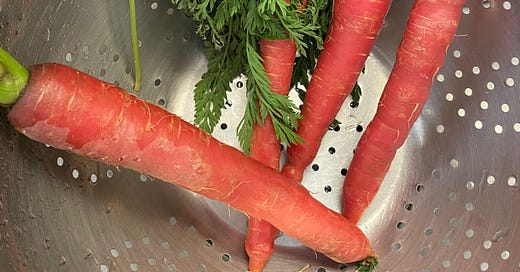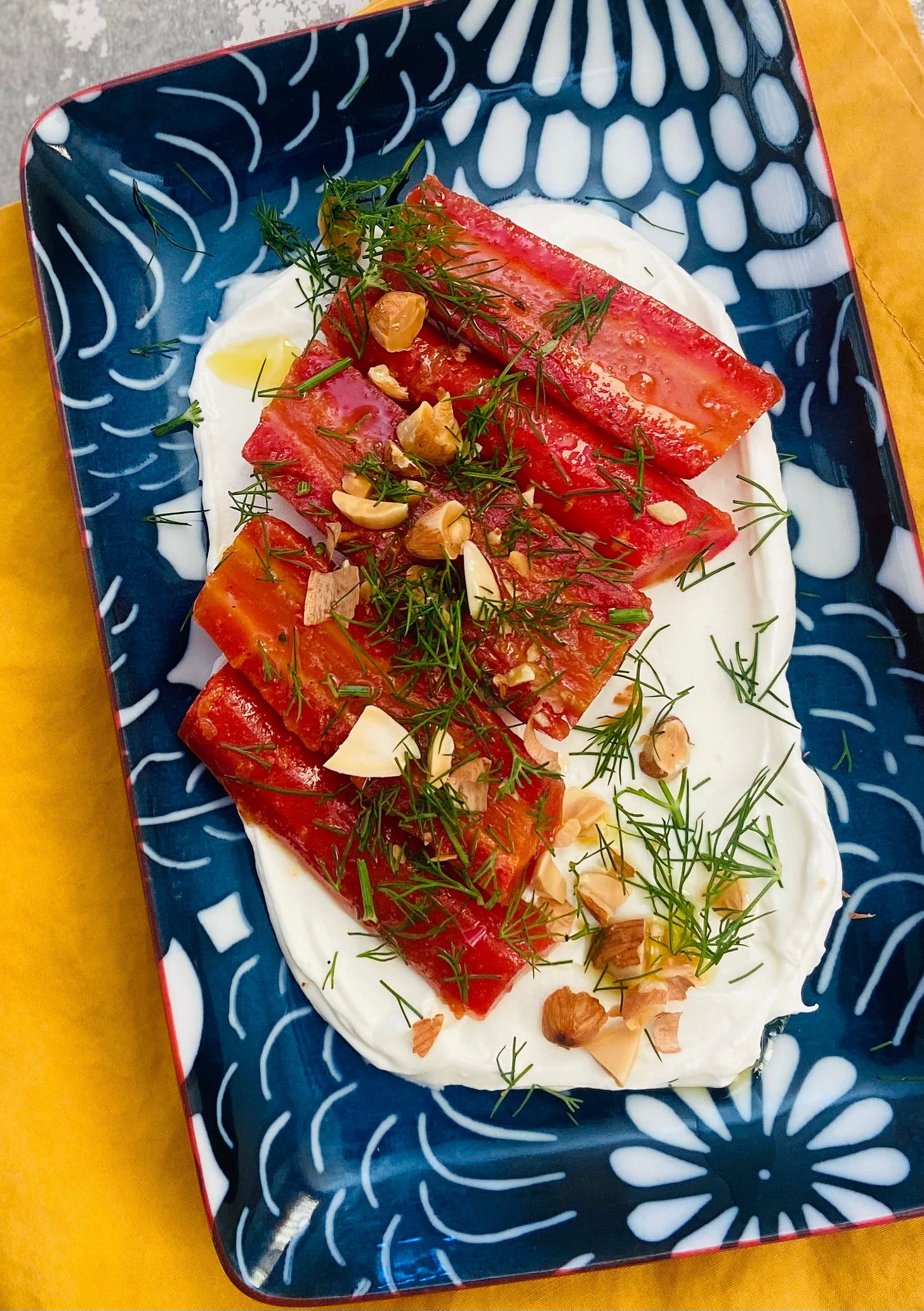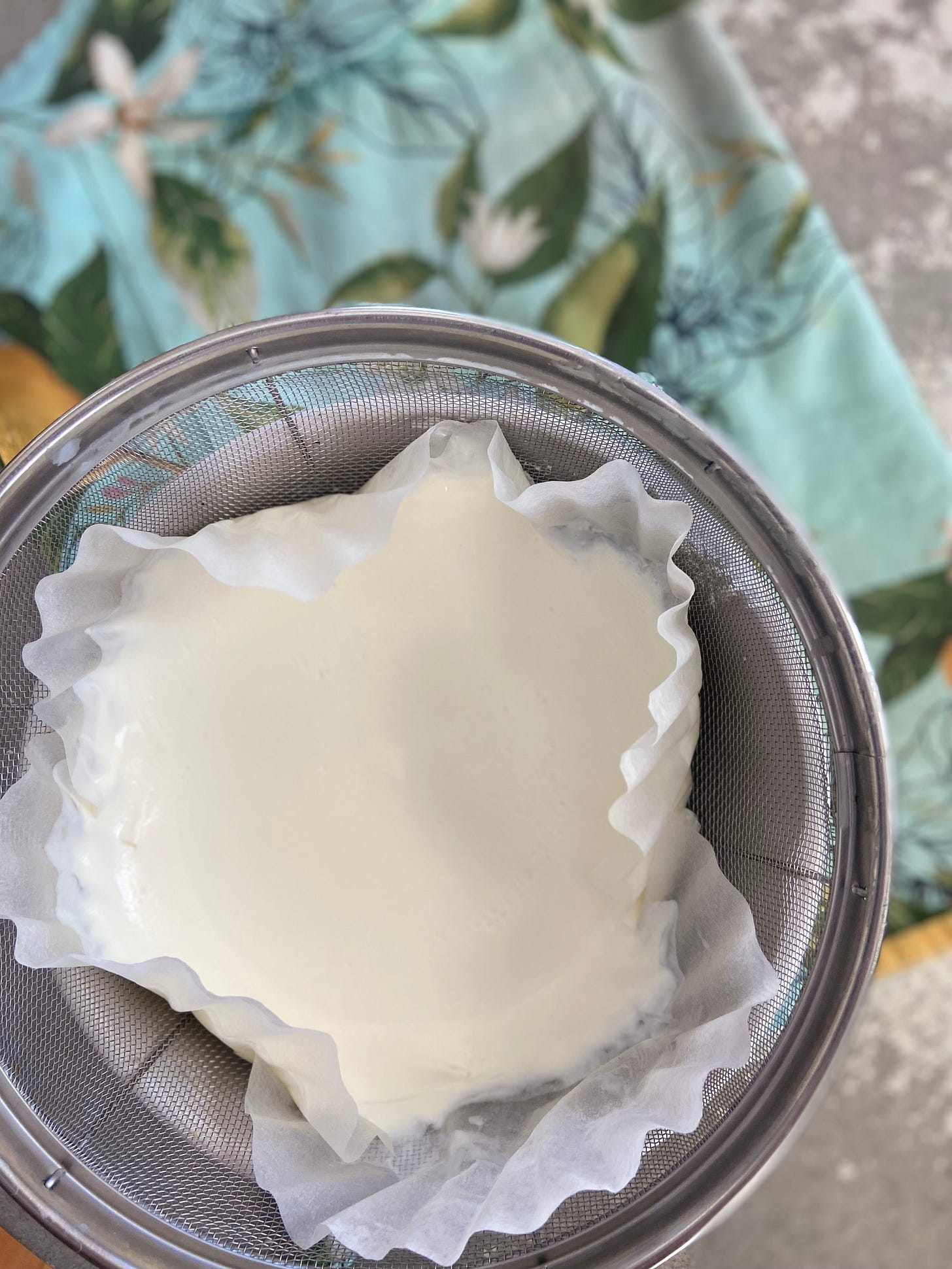Greetings Chroniclers! This week’s recipe is vegetable centric, another step along the omnivore road. But really, it’s about improvising with ingredients on hand and being inspired by others. As always, thanks for reading!
Last week, I talked about being an omnivore. I want to start preparing vegetables with a main event focus rather than being relegated to a supporting role, more like an afterthought.
It seems the universe was listening to me as I began searching for ways to get enough protein from non-meat sources.
Several days after posting last week’s quinoa burger recipe (they were delicious by the way), I heard an interview with Sheela Prakash, author of Salad Seasons: Vegetable-Forward Dishes All Year, on The Splendid Table, one of my favorite radio shows. Show host, Francis Lam, asked Prakash to talk about one of her favorite recipes in the book, Spring Carrots with Burnt Saffron Butter and Labneh.
“Carrots don’t always get the star treatment they deserve”, said Prakash.
She went on to say “…carrots are a true joy. They just don’t get as much respect as other vegetables. There’s so much you can do make them more than just carrots.”
But the icing on the cake, no not carrot cake, is that this carrot based salad also features labneh.
Labneh and carrots? Together? Yes, please.
Labneh is a Middle Eastern, double strained yogurt with the consistency of cream cheese. I remember making a version of labneh at home by straining Greek yogurt overnight. Once the whey drains away, what’s left is a creamy, silken, “cheese” that is perfect for spreading on pita or toast or crackers. Labneh begs to be topped with olive oil, a sprinkle of chopped fresh herbs, maybe a generous sprinkle of Za’atar, my favorite spice mix.
It's worth waiting overnight for this kind of magic to happen.
As luck would have it, I had just purchased some stunning, deeply golden carrots, their green tops still attached. I was fresh out of Greek yogurt but had a new bottle of kefir in my fridge. All it took was a quick search on the Lifeway website to confirm that indeed, I could strain the kefir overnight to make a labneh style cheese.
Buying labneh is easy. Making it at home, is almost as easy. It’s a two ingredient affair requiring either Greek yogurt or kefir and salt. That’s it! You just have to plan ahead to let it rest overnight in your fridge. The next morning, while you’re spreading your toasted everything bagel, or sourdough toast, or warmed pita bread with the labneh, you will be grateful that while you slept, this miracle occurred in your refrigerator.
To make labneh at home you’ll need either cheesecloth or paper coffee filters. I went the coffee filter route. You’ll also need a mesh strainer set over a bowl to catch the water that will drain from the yogurt or kefir. If you make labneh using Greek Yogurt, you’ll need a 32 ounce container of preferably organic, whole milk yogurt.
Here’s how to make labneh using kefir:
3 cups organic kefir
1 ½ teaspoon sea salt
Line a fine-mesh sieve with cheesecloth OR 4 paper coffee filters. Place the lined mesh strainer over a large enough bowl to catch the liquid that will drain.
Mix the salt into the kefir and then pour into the lined sieve. Place in refrigerator for 24 hours.
Discard the water in the bowl.
Transfer the drained labneh into a container and store in the refrigerator for up to 5 days.
When it came time to prepare the carrots, I realized I didn’t have enough butter to roast them. So, I did the next best thing. I cooked them on the stovetop in water with some seasonings. If you’d been here with me, you would have asked me what smelled so good.
Here's how I cooked the carrots:
4 medium carrots
1 teaspoon salt
2 garlic cloves, peeled and lightly crushed
2 dried bay leaves
10 whole black peppercorns
1. Wash and peel the carrots
2. Cut them lengthwise. Then cut them in half crosswise.
3. Place carrots in a medium skillet with enough water to just barely cover.
4. Add salt, bay leaves, peppercorns, and crushed garlic cloves.
5. Cook over medium high heat until fork tender, about 15-20 minutes.
6. Carefully remove carrots with a slotted spoon to a shallow container.
7. Allow to cool.
In lieu of brown butter, I made a pretty standard vinaigrette to envelope the cooked carrots since I wanted them to taste like the orange gems they resembled. The vinaigrette recipe makes enough dressing to use throughout the week on leafy salads, or–drum roll here–mixed into the labneh!
For Vinaigrette:
1. ½ cup olive oil…9 ounces
2. ¼ cup red wine vinegar…3 ounces
3. ½ teaspoon salt
4. 1 tablespoon Dijon mustard
5. 3-4 grinds fresh pepper
6. ½ finely chopped shallot
Measure olive oil and vinegar into a glass container. A small mason jar works well. Add salt, mustard, pepper and chopped shallot. Blend with a whisk until all ingredients are well incorporated and ingredients are well combined. Store leftover vinaigrette in refrigerator.
My version of Sheela Prakash’s recipe is based on what I had in my refrigerator and a love for all things thick and creamy. I hope it serves as inspiration for you, and me, to approach common, everyday ingredients in new ways.






